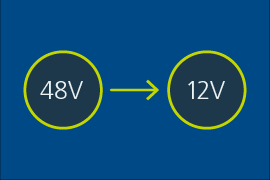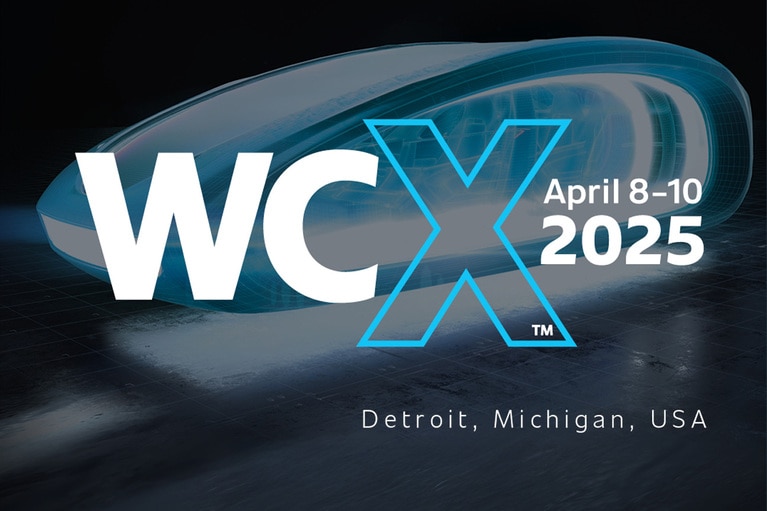By Seishi Tsukimoto, Senior Application Engineer
Battery electric vehicles (BEVs) and plug-in hybrid electric vehicles (PHEVs), today are running on battery voltages of 800V, exceeding the conventional 400V series. The move to 800V batteries is to improve performance, reduce fast charging time, cope with increased power consumption, and extend cruising range.
There is a major challenge with moving to 800V batteries for electric vehicles, namely that much of the fast-charging, public infrastructure is not yet compatible with 800V. Therefore, measures have been taken to equip 800V vehicles with a built-in power adapter enabling 800V vehicles to be charged at conventional 400V charging stands. Bi-directional power modules are one way to enable 800V electric vehicles to support 400V infrastructure, as well as a unique voltage conversion method between 400V and 800V. Today OEMs are addressing this in various ways with a wide variety of efficiency.
Porsche Taycan is the first mass-produced 800V electric car, a battery EV released in 2019. This is a typical example of an 800V vehicle that is charged using a 400V charging infrastructure. A boost converter that converts the 400V input from the charger to suit the vehicle's 800V battery is installed in the vehicle as a DC onboard charger. This boost converter has a circuit that bypasses the input and output of the converter. When charging with an 800V charger, the boost converter is bypassed and the 800V battery is charged directly.
Figure 1: Porsche Taycan DC onboard charger connection
According to the manufacturer, when charging with an 800V charger, it takes about 20 minutes to charge 80% of the battery capacity with rapid charging of up to 270kW. On the other hand, when using a 400V charger, the maximum capacity is 150kW, which takes about 35 minutes to charge the same capacity.
Hyundai IONIQ 5 also uses an 800V primary battery (released in 2021). The IONIQ 5 likewise includes a boost function to charge the vehicle's 800V battery using a conventional 400V charger. However, unlike the Porsche Taycan, it does not have a DC onboard charger, and achieves a boost function using a driving motor and inverter (Figure 2).
Figure 2: Hyundai IONIQ 5 boost function configuration
A and B are a driving motor and an inverter, respectively, and the fast charger is connected to the high voltage side of the battery through switch S1 and to the neutral point of the motor through switch S2. When the vehicle is running, S1 and S2 are opened and A and B operate as a normal running motor and inverter. When charging with a 400V charger, S2 is closed, operating motor A as a boost converter reactor, and inverter B as a boost converter switch to charge the vehicle's 800V battery. If the charger supports 800V, closing S1 and opening S2 will bypass A and B and charge the 800V vehicle battery directly. Using this method eliminates the need to install a dedicated boost converter for the purpose of charging an 800V vehicle with a 400V charger.
GMC HUMMER EV is a BEV whose production started in 2021. Unlike the previous 800V BEV, the high voltage primary battery is 400V. Although this vehicle has a 400V system, it is compatible with 800V chargers to improve the performance of fast charging.
Figure 3: GMC HUMMER EV battery configuration
It has a unique configuration (Figure 3) to support both 400V and 800V fast chargers. The 400V battery installed in the vehicle is divided into two 400V battery blocks. Two 400V battery blocks can be connected in parallel or in series by switching the connection with switches S1, S2, S3. In normal times, including when the vehicle is running, only switches S1 and S2 are closed to connect the two battery blocks in parallel and use them as a 400V battery. This is also the case when charging with a 400V charger. When supporting an 800V charger, opening switches S1 and S2 and closing only S3 to connect the two battery blocks in series to treat them as an 800V battery.
According to the manufacturer, by supporting an 800V charger, a 350kW fast charge is possible, and the vehicle can run 160km in only 10 minutes of charging time.
Vicor's battery virtualization solution
Vicor, a power supply module manufacturer, proposes a unique "battery virtualization solution" using the company's high density power modules. This is one of step-up converter technology for charging an 800V battery with a 400V charger, and uses the company's proprietary bidirectional DC-DC converter with a fixed voltage conversion ratio.
A bidirectional fixed voltage conversion ratio DC-DC converter is a converter without regulation (voltage stabilization) function in which the input/output voltage ratio of the DC-DC converter is fixed, and the voltages are expressed by the following formula:
output voltage = input voltage x transformation ratio K
Since it is bidirectional, reverse conversion is possible (output voltage = input voltage/K in reverse operation), and the internal series impedance is small, so it works as a transformer that can convert direct current.
Figure 4: 37.5kW, 400V/800V Fixed-Ratio bidirectional converter
The battery virtualization solution places a fixed voltage conversion ratio bi-directional converter with a transformation ratio of two in front of the 800V battery, making the battery voltage of an 800V vehicle appear to be half the voltage of 400V (Figure 5). As the charging progresses, the voltage of the 800V battery rises, and the voltage seen from the charger side also rises proportionally (by 1/2).
Figure 5: Vicor battery virtualization
The module (Figure 4) has a 37.5kW output/peak efficiency of 99% and has a size of 92x80x7.4mm. By connecting in parallel, it is possible to support high-power, fast charging in a small space.
The advantage of using bidirectional power modules is the 800V battery can power 400V loads when the battery is not being charged.
Reference
- Porsche web site
https://media.porsche.com/mediakit/taycan/ja/porsche-taycan/das-laden
- DR. JOACHIM WAGNER:"A resonant solution for fast, flexible EV charging",2021-05-19
https://www.sae.org/news/2021/05/resonant-solution-for-fast-flexible-ev-charging
- U.S. Patent: US-20190023136-A1
https://image-ppubs.uspto.gov/dirsearch-public/print/downloadPdf/20190023136
- U.S. Patent: US-11358492
https://image-ppubs.uspto.gov/dirsearch-public/print/downloadPdf/11358492
- Vicor web site
https://www.vicorpower.com/industries-and-innovations/automotive/automotive-products
- Vicor web site
https://www.vicorpower.com/ja-jp/industries-and-innovations/automotive/dc-fast-charging
This article was originally published by the report of the IEEJ "Technical Committee on the Integration of Electric Mobility and Energy Systems".
Over 20 years of research and development/design of DC-DC converters for industrial equipment, automotive, satellites and etc, and over 10 years of research and development of motor inverters. Since 2018, as a senior application engineer at Vicor, Tsukimoto is mainly in charge of technical support for automotive.
Seishi Tsukimoto, Senior Application Engineer













